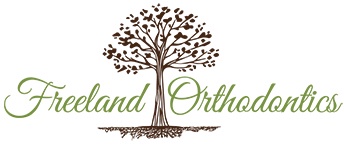Roth/Williams Treatment
Roth/Williams International Society of Orthodontics is a unique and elite group of orthodontists from countries all over the world who have taken a special advanced course that teaches the Roth Philosophy of orthodontics. Graduates of this course have been shown how to correct the bite as well as align the teeth for an attractive smile. Thus for the Roth/Williams doctor, orthodontics is a health service as well as a cosmetic one. It is the only course of its kind in the world, and the only school in the US is at the University of Detroit (www.rothwilliams-aeo.com). Orthodontists attending this course meet for seven sessions, four days each, over a period of two years. The format allows attendees to study and learn the information, practice the clinical skills needed, and gradually transform their practices. The practice of a certified Roth/Williams orthodontists will be different in many ways from the traditional tooth alignment orthodontic practice. (see “selecting an orthodontist”). The Roth/Williams Orthodontic Philosophy is based on Seven Goals of Treatment, each with specific, definable criteria.
SEVEN TREATMENT GOALS FOR THE ROTH/WILLIAMS ORTHODONTIST:
The Patient’s Chief Complaint – The doctor must keep in mind the concerns of the patient. What does the patient desire from treatment? This helps in customizing a treatment plan for each patient. For example, an adult may not desire full bite correction, and wants only an attractive smile. A treatment plan can be designed that achieves the smile while providing post treatment retainers that not only maintain the tooth positions, but guard the long term health of the system even though bite correction has not been achieved. This situation is a good time to consider Invisalign or clear brackets.
Dental Esthetics – There are specific characteristics of a good looking smile. Of course, this is of paramount importance, and treatment is designed for each patient to capture as many of these characteristics as possible.
Facial Esthetics- There are specific proportions and characteristics of an attractive face which may be influenced positively or negatively by orthodontic treatment. For example, orthodontics can cause the lower jaw to rotate open, moving the chin down and back, which often leads to less pleasing facial proportions. Another example is positioning of the front teeth, which affects lip posture, and can add or detract from facial esthetics.
Dental Occlusion- This simply means the way the upper and lower teeth fit together. Dr. Larry Andrews of San Diego studied natural, ideal dentitions to give the profession an exact criteria for nature’s formula as to how teeth should fit together. If properly managed, the braces used in the Roth/Williams philosophy (the “Straight Wire Appliance”) help direct the orthodontist to the correct result since they are designed from Dr. Andrews’ work.
Health of the Temporormandibular Joints—Today we have very reliable information regarding healthy form and function of the jaw joints. We also know the teeth are dominant over the joints and dictate position and movement of the ball in the jaw socket. Thus the relationship between the teeth and temporomandibular joints is absolutely crucial for the long term health and maintenance of the chewing system. Currently, the best tool for study of tooth to joint relationship is the articulator. The Roth/Williams orthodontists will nearly always need to mount molds
Periodontal health – The word “periodontal” refers to the bone and “gum” tissue surrounding the teeth. Proper form and function of the teeth, joints, and muscles can help to preserve health of the periodontal tissues. For example, the back teeth are naturally designed to take the heavy forces of function along their long axis. When there is inadequate overlap of the front teeth and/or improper position of the jaw in the socket, the forces delivered to the posterior teeth become more horizontal which can be detrimental to periodontal health.
Stability-- A major key to the long term health and stability of the entire chewing system is the proper relationships of the teeth, jaw joints, and muscles.
